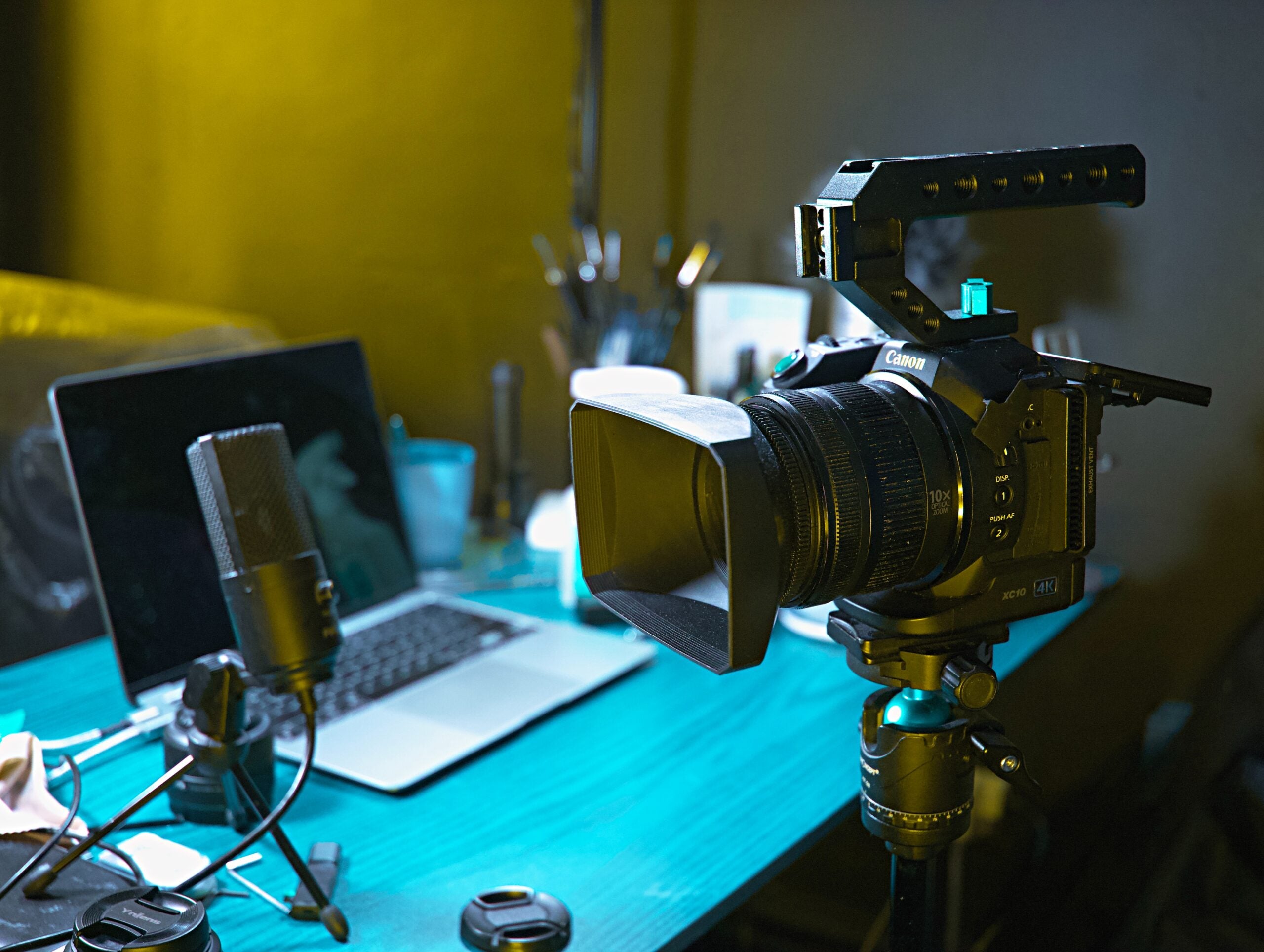Video Podcasts: Podcasting Reinvented?
You have undoubtedly heard people talking about their favorite podcasts. You may even have one of your own. Statistics show that 144 million Americans over the age of 12 have listened to a podcast. And those numbers keep growing. But with the emergence of video podcasts, there’s more confusion than ever about what, exactly, a podcast IS.
Put simply, a podcast is a digital file made available on the internet for downloading to a computer or mobile device (usually delivered via an RSS feed), typically available as a series, new installments of which can be received by subscribers automatically. You could think of a podcast as being like a radio program that is available free and on demand. You will find podcasts about nearly anything you can think of, from discussions and interviews on a myriad of topics, to immersive audio dramas, even game shows! It’s been said that if you can Google it, there’s probably a podcast about it.
This is why when most people think of a podcast, they think of going to their favorite podcasting app and choosing a show to listen to. So how is it that weekly podcast consumers cite YouTube consistently as their most used podcast platform? Or that a recent survey by Cumulus Media and Signal Hill Insights cites Facebook as the 4th most used place for accessing podcasts among weekly podcast consumers? Last I checked, neither of those platforms are audio only.
It turns out that podcasting isn’t (and never really was) an audio only medium. In fact, from the beginning, RSS Feeds, one of the hallmark characteristics of podcasts, have been used to distribute not just audio but video and even PDF documents in a user request-based distribution and consumption medium.
Podcasting has grown significantly in popularity since its inception, offering a diverse range of content and allowing anyone with a microphone and internet access to share their voice and ideas with a global audience. And now it seems that the podcasting landscape is changing to emphasize video.
Platforms like YouTube and Spotify, with their focus on video, are changing the calculus for podcasters and blurring the lines of what constitutes a podcast. If you go onto YouTube, you will find video playlists classified as podcasts. The thematic and episodic structure of these shows, similar to traditional podcasts, blurs the lines and expands the definition of podcasting by indicating that these types of programs are widely considered podcasts by those who consume them.
To confuse things even more, the popular music app Spotify has expanded its offerings to include video with some podcasts and now provides creators with tools to publish videos directly alongside their ingestion of audio files from podcast RSS feeds.
For creators, these changes expand the tools and platforms available to share their content. They can now serve their audience that consumes the traditional audio only podcast as well as those who prefer video content potentially expanding their audience and their monetization opportunities.
To be honest, until recently I was actually against the idea of “video podcasts” as counter to what podcasting represented. I felt that if you added video and uploaded it to YouTube it became something separate from the podcast and the creator became a “YouTuber” in addition to a podcaster. However, I have begun to reconsider thanks to an article by Podcast Hall of Famer and co-host of the New Media Show podcast, Rob Greenlee titled “What is Considered a Podcast in 2023? Convergence of Audio and Video Replayed Again.” In it, he argues that, regardless of how it is delivered, the essence of podcasting remains consistent: serialized content that delves deep into specific themes, stories, or topics. Audio and video content can coexist on the same platforms. It is the heart of the content, its relevance, and how well it resonates with its audience that makes it what it is and that will determine its success.
Ultimately it will be consumers who determine what format they prefer. As the availability of high-speed internet and smart mobile devices continues to expand it seems to matter to less and less to them whether podcasts are audio or video, switching freely between both.
As the definition of podcasting expands, the variety of content and how it is delivered will expand as well. Content is already becoming more personalized and interactive allowing for consumers to find specifically what they want and engage with it in deeper ways.
In the future we may need to continue to add additional technologies to the definition of podcasting. Augmented reality (AR) and virtual reality (VR) are becoming more accessible so that in the future we may not just see and hear content but also experiencing it in ways we can’t even imagine now, once again reinventing podcasting.
The All INdiana Podcast Network has begun adding video to a few of our podcasts. Check out the All Indiana Politics Podcast with Phil Sanchez UnPHILtered and Real Talk with Rev. Charles Harrison and look for more coming soon!
Have you thought about podcasting? The All INdiana Podcast Network can help you create, produce, and distribute your podcast! Email us today for more information.
